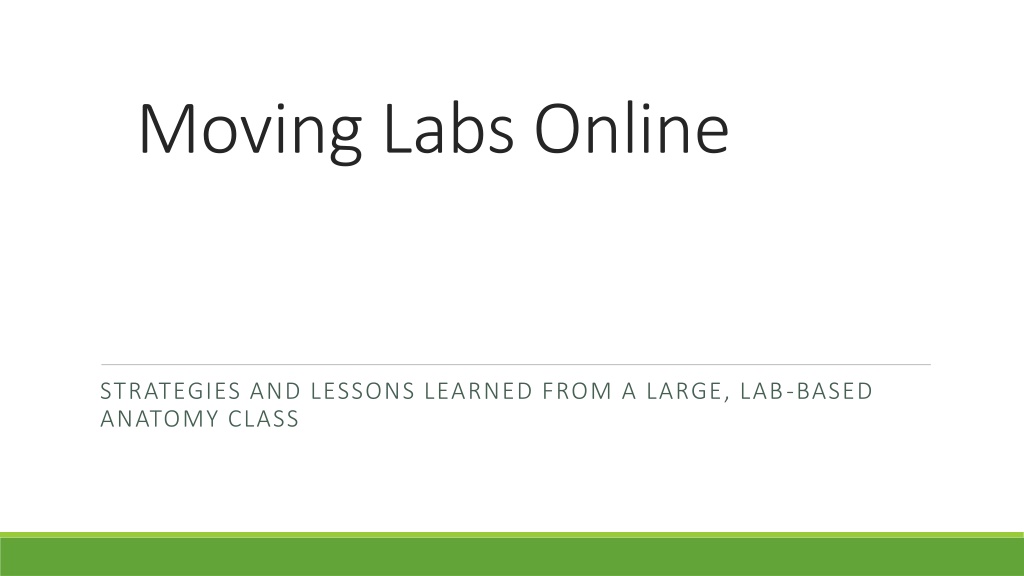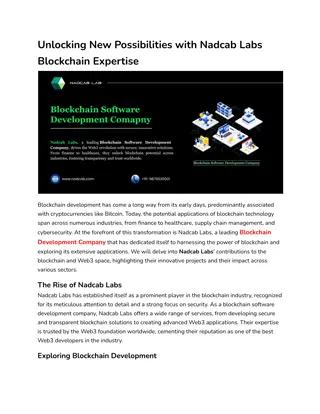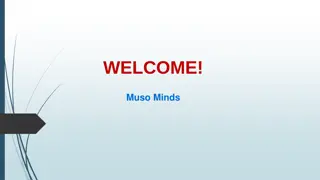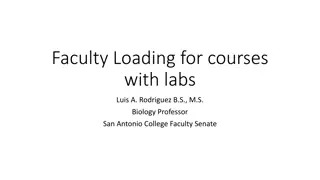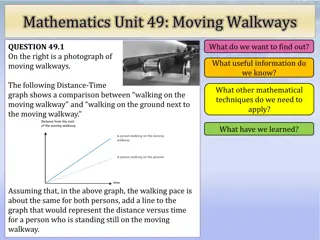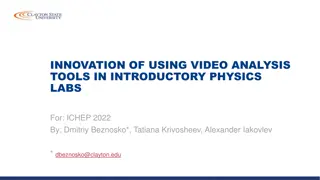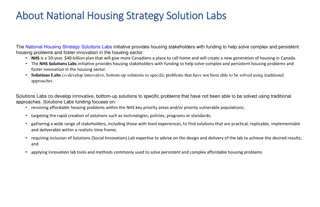Strategies and Lessons Learned for Moving Anatomy Labs Online
Explore strategies, challenges, and tips for transitioning large lab-based anatomy classes online. Discuss considerations, effective delivery options, assessment methods, and examples like Human Anatomy activities. Learn from an Associate Professor's experience teaching human anatomy and physiology online.
Download Presentation

Please find below an Image/Link to download the presentation.
The content on the website is provided AS IS for your information and personal use only. It may not be sold, licensed, or shared on other websites without obtaining consent from the author. Download presentation by click this link. If you encounter any issues during the download, it is possible that the publisher has removed the file from their server.
E N D
Presentation Transcript
Moving Labs Online STRATEGIES AND LESSONS LEARNED FROM A LARGE, LAB-BASED ANATOMY CLASS
About me Associate Professor, Teaching Stream in Kinesiology and Health Science Six years experience teaching online human anatomy and human physiology labs (KINE 3465 and IHST 1001/2) This summer: KINE 2031, KINE 3465 This fall: KINE 2031, NATS 1650
Todays objectives Discuss basic considerations for moving your lab online Explore effective options for delivery of online labs and share examples Discuss challenges surrounding the faculty, student and TA experience when labs are online Explore effective options for assessment for online labs and discuss challenges Share lessons learned and tips for teaching remote labs
Basic considerations Moving labs online is not easy but it is important What do your students get out of your lab now? Problem solving, teamwork, critical thinking, skill development When developing the online version, keep those skills in mind What software do you have available? Through the library, with your course text What kind of TA support do you have? Will this be an entirely online experience? Or will there be an offline component (i.e. lab kit, collecting data at home).
Developing an online lab structure Keep your learning outcomes and lab-based skills in mind Identify which of your lab activities can be delivered online Can your existing lab experience be easily adjusted to a remote format? How many labs need to be re-imagined for remote learning?
Technology options Through the York library Primal Pictures (A&P) With your course textbook Mastering (Pearson), WileyPlus Open access labs and simulations: libguides.twu.ca/oer/labs
Example: Human Anatomy KINE 3465 Regional Human Anatomy II, and KINE 2031 Human Anatomy Students watch a guided dissection video then spend time on their own going through it. Weekly synchronous lab meetings (optional...for now)
Example: Ergonomics A colleague at Wilfred Laurier University took videos of her friends/neighbours doing various jobs Students will watch the short videos and break down the biomechanical components of each job and analyze potentially damaging aspects of the work Lab reports will be submitted, answering specific questions about each task
Start of semester considerations Provide VERY clear instructions for the students In our experience, an introductory video went a long way to ensure we weren t bombarded with clarification questions Find a way to ENSURE they watch the video (i.e. a bonus question) Be sure it is simple to find resources and get started on a lab Have IT and other help information right on your main course page Don t start labs until at least one week into classes this gives a bit of time for students to sort out tech issues
Engaging Students Online Be available for students especially when tests are open or assignments due Maximize communication online discussion forums, virtual office hours Have a synchronous course component Set up the synchronous component to MAXIMIZE engagement and communication
Communication with Teaching Assistants Be available at synchronous lab times to deal with IT problems Meet regularly with TA s (more than you normally would) Ask for their feedback on how labs are going and how they can be improved Track lab attendance
Assessment Lab reports submitted online Lab tests Oral presentations KINE 2031: two lab tests (fill in the blank; identifying structures) Tight time (45s/question) Random question bank Sequential Have a practice test to ensure everyone s tech will work on test day
Academic Integrity *sigh* Assessments where all students hand in something different (i.e. generate their own data, create a video) Tight times, random question bank Proctoring software
